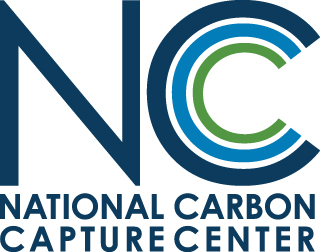In a significant step toward commercialization, two carbon capture technologies developed through testing at the U.S. Department of Energy (DOE) National Energy Technology Laboratory’s National Carbon Capture Center have been selected by DOE to advance to large-scale pilot demonstrations.
The technology developers – Linde/BASF and Membrane Technology and Research (MTR) Inc. – were recently awarded a total of approximately $99 million in federal funding under Phase III (construction/operation) of funding opportunity announcement DE-FOA-0001788, Fossil Fuel Large-Scale Pilots.
In these Phase III projects, carbon capture demonstrations of approximately 10 megawatt electrical (MWe) will be constructed and operated using the slipstream from a full-scale power plant. Data and learnings from the pilots will be applicable in capturing carbon dioxide (CO2) emissions from a variety of power plants and industrial facilities, including natural gas, waste biomass and others.
“It’s exciting when emerging technologies that were evaluated and improved at the National Carbon Capture Center advance further toward eventual commercialization,” said John Northington, director of the National Carbon Capture Center. “Both the Linde/BASF and MTR projects illustrate the importance of our real-world testing in bridging the gap between the laboratory and large-scale demonstration.”
Linde/BASF solvent process
Linde/BASF’s advanced amine-based post-combustion CO2 capture technology will be demonstrated in a 10-MWe slipstream at City Water, Light and Power Unit 4 in Springfield, Illinois, through the DOE funding award made to the Board of Trustees of the University of Illinois. The project will treat approximately 5% of the flue gas, providing an important step in demonstrating the commercialization of an economical, transformational carbon capture technology.
Installation and testing of the Linde/BASF OASE® blue solvent process and engineering occurred at the National Carbon Capture Center in the 2014 – 2016 timeframe and resulted in more than 90% CO2 capture and more than 99.9 percent CO2 purity. Over 4,000 hours of parametric and long-term testing at a 1.5-MWe scale validated the stability, performance and cost advantage of the solvent and provided data to support future scale-up of the technology.
MTR Polaris polymeric membranes
A unique post-combustion carbon capture membrane system developed by MTR will be demonstrated in a large pilot test at the Wyoming Integrated Test Center (WITC), in Gillette, Wyoming. Operation of the MTR membrane system will treat approximately 2.4% of a single unit at WITC and is expected to capture 70% of the CO2, or around 150 tonnes of CO2 per day. Proving the cost-effectiveness of the technology at this scale could advance a commercial alternative to solvent-based carbon capture systems.
The MTR class of polymeric membranes, called PolarisTM, was tested at the National Carbon Capture Center from 2010 to 2015. A 20 tonnes-per-day bench-scale system was successfully installed, commissioned and operated on flue gas for over 900 hours, providing MTR with valuable insights to continue technology development and scale-up.
“We are very grateful for the opportunity we had to work on our capture approach at the National Carbon Capture Center,” said Tim Merkel, vice president of technology at MTR. “The lessons we learned from testing in this real-world environment accelerated technology development and set a foundation for future scale-up and commercialization.”
As a carbon capture research and test facility for DOE’s National Energy Technology Laboratory, the National Carbon Capture Center has provided more than 115,000 hours of real-world testing for approximately 60 advanced technologies – reducing the projected cost of carbon capture for fossil-based power plants by approximately 40%.


